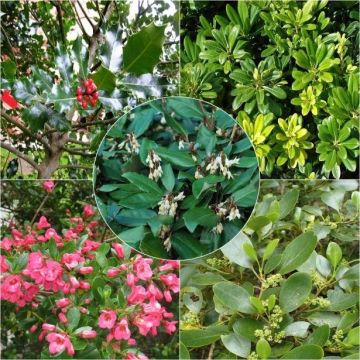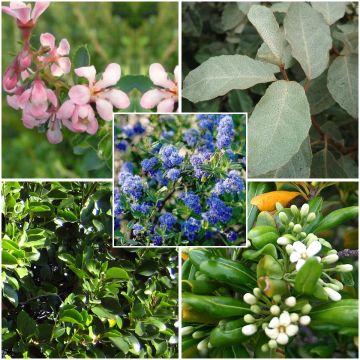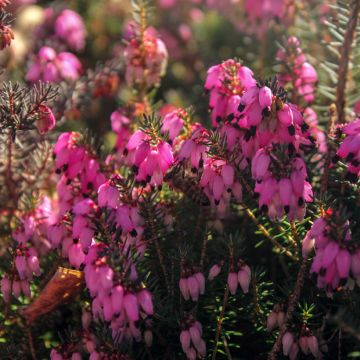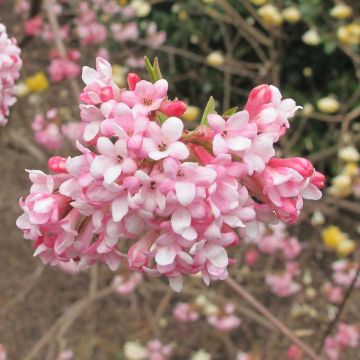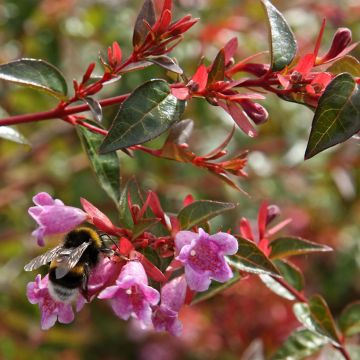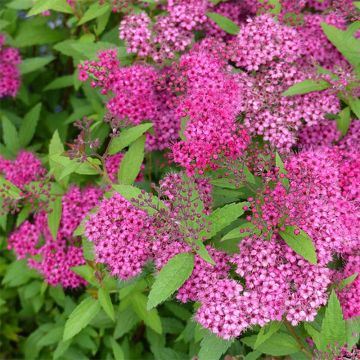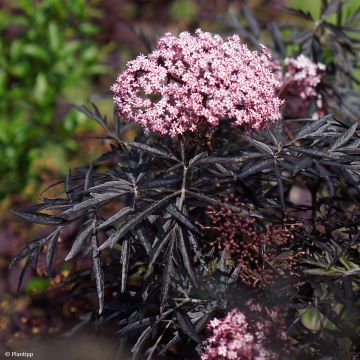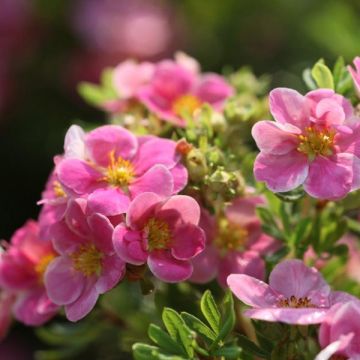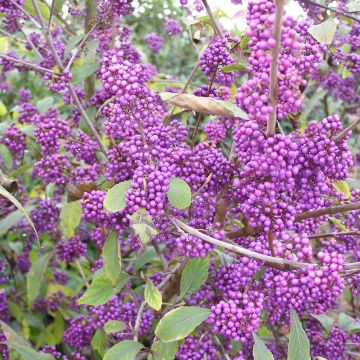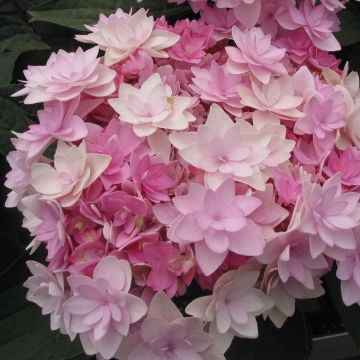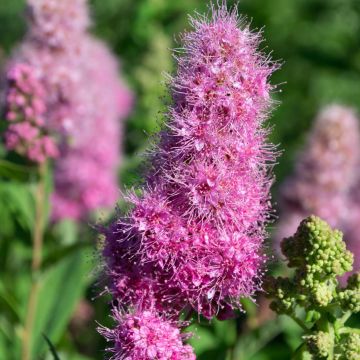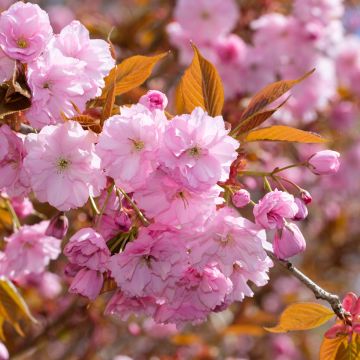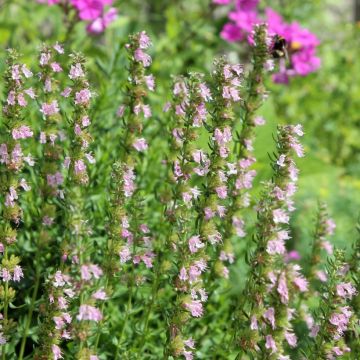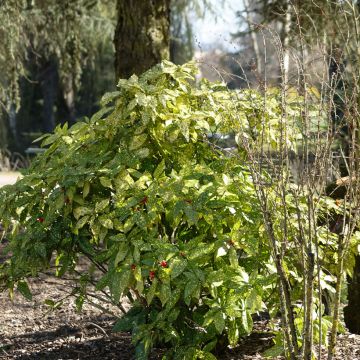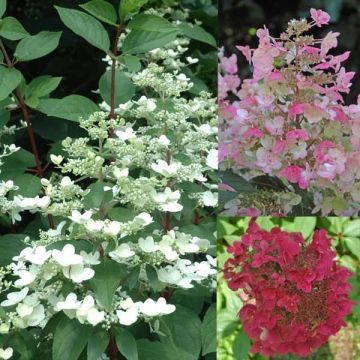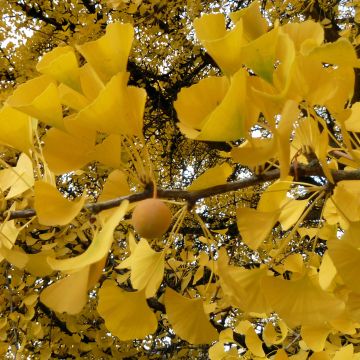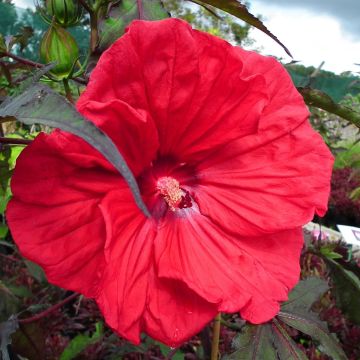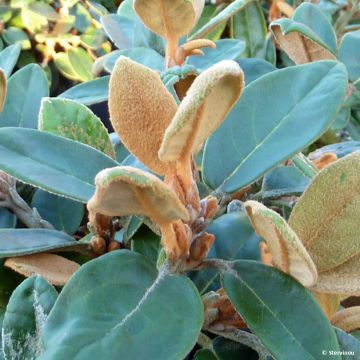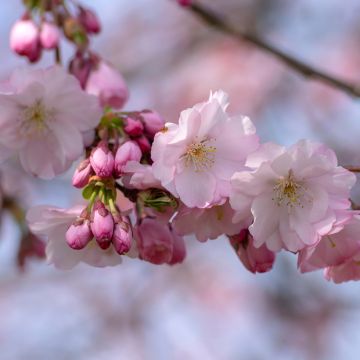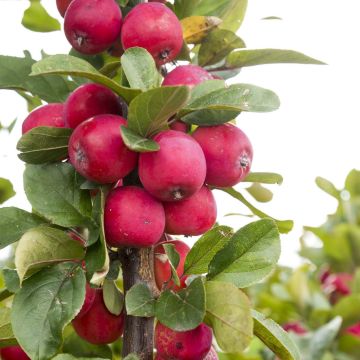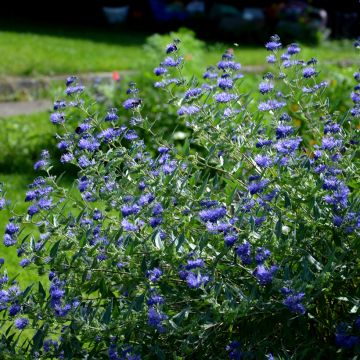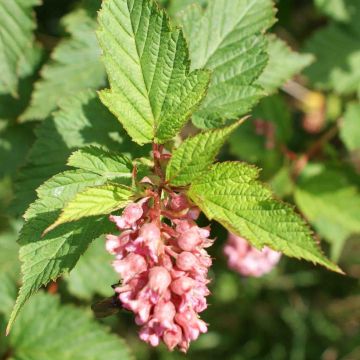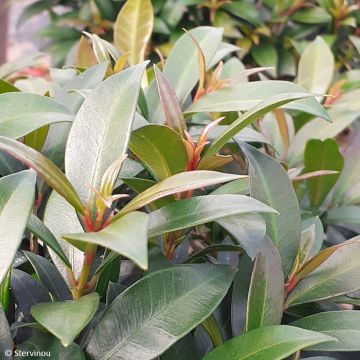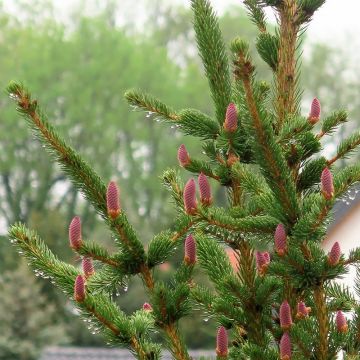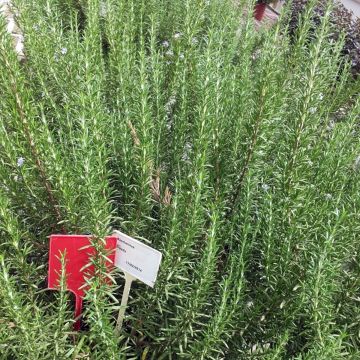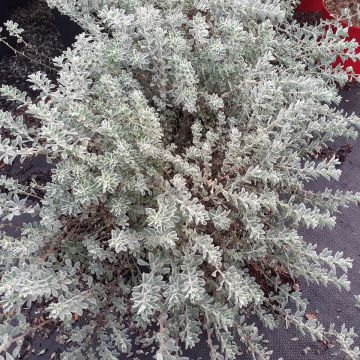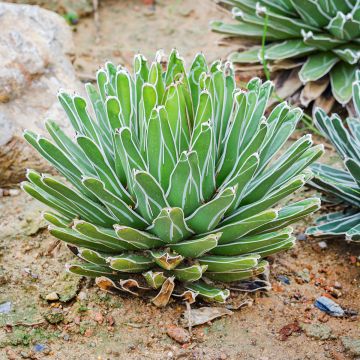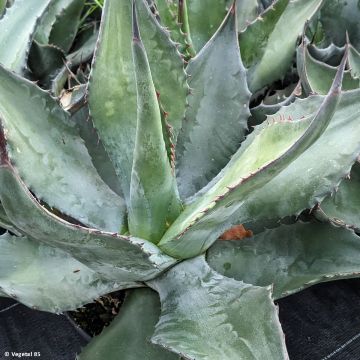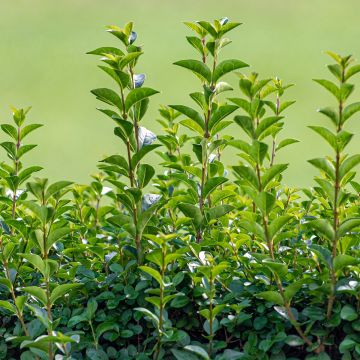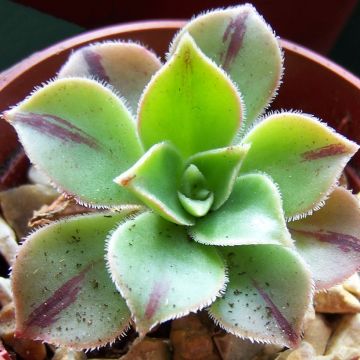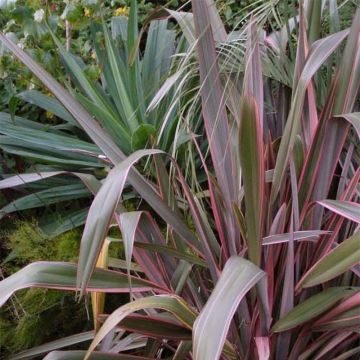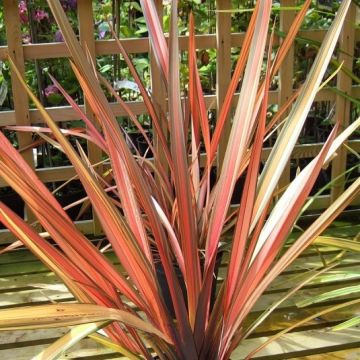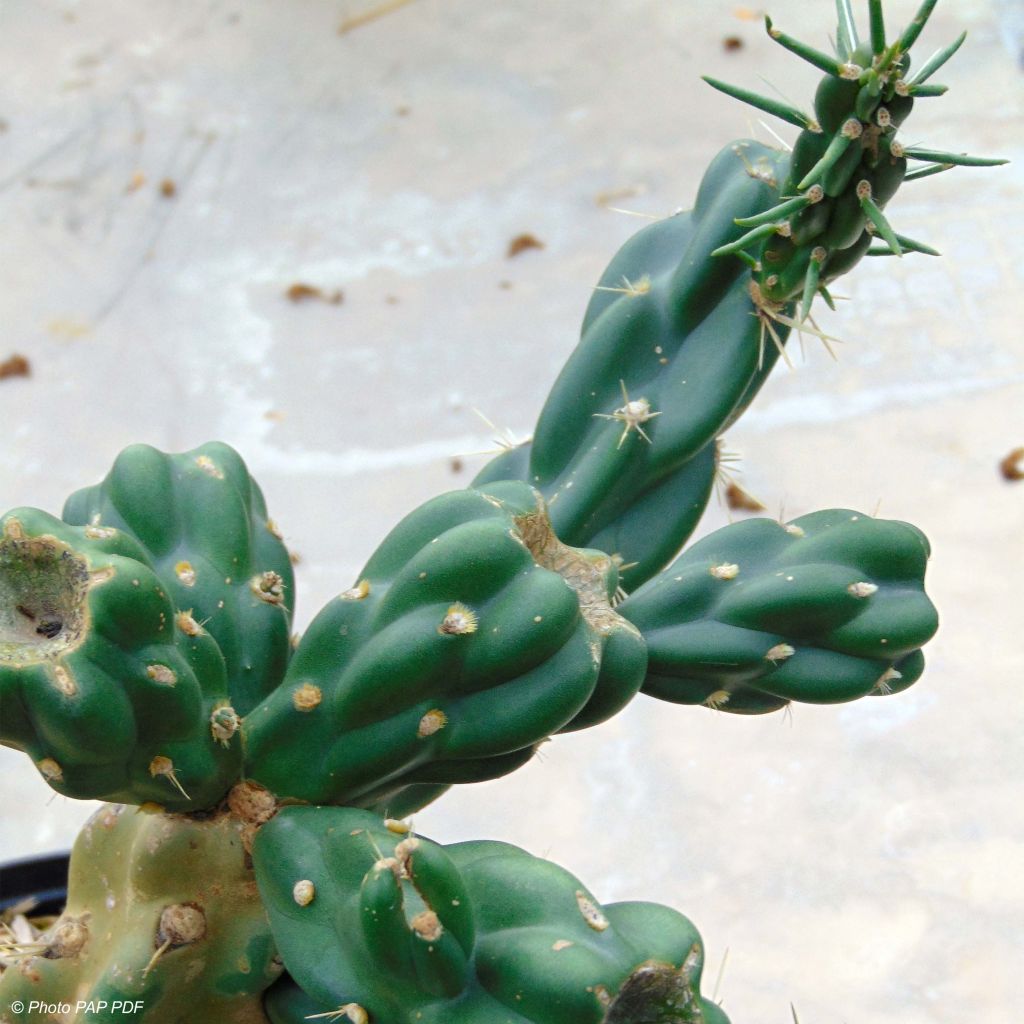

Cylindropuntia imbricata
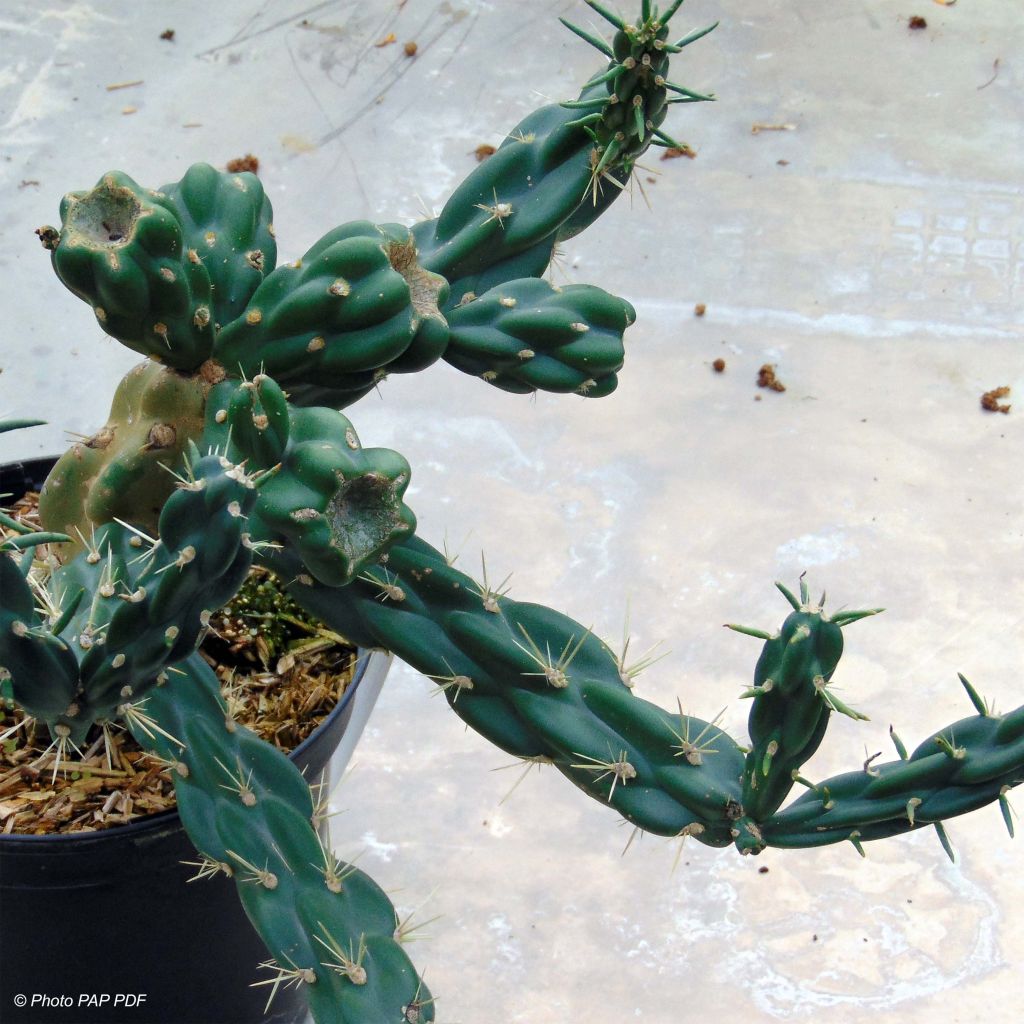

Cylindropuntia imbricata
Cylindropuntia imbricata
Cylindropuntia imbricata
Tree cholla, Cane cholla, Chainlink cactus, Devil's rope
Why not try an alternative variety in stock?
View all →This plant carries a 12 months recovery warranty
More information
We guarantee the quality of our plants for a full growing cycle, and will replace at our expense any plant that fails to recover under normal climatic and planting conditions.
From €5.90 for pickup delivery and €6.90 for home delivery
Express home delivery from €8.90.

Does this plant fit my garden?
Set up your Plantfit profile →
Description
Cylindropuntia imbricata (syn. opuntia imbricata) is a quite astonishing prickly pear cactus native to the deserts of North America. It is both hardy and drought-resistant. This strange cactus is a cousin of the Prickly Pear, but unlike it, it develops cylindrical and not flat bosselated articles. Armed with long white prickles, this curious bush with a glaucous colour, blooms in early summer with ephemeral and delicate fuchsia-pink flowers with a slightly violet heart. Its growth is rapid, and its cultivation in rocky and well-draining soil poses no problem. Surprising in a minimalist decor, spectacular against a backdrop of rocks and blue sky, it naturally structures exotic, contemporary, and of course dry and wild gardens.
Cylindropuntia imbricata is a succulent plant devoid of leaves from the cactus family. This botanical species is native to the arid regions of northern Mexico and southwestern USA, where it grows at altitudes between 1200 and 2300m (3937 and 7546ft). This cactus forms a bushy and slightly spreading plant after a few years. An adult specimen can reach 2 to 3m (7 to 10ft) in all directions under favourable conditions, usually 1m (3ft) in cooler climates. The vegetation consists of a trunk that can reach 25cm (10in) in diameter over time, dividing into main branches called articles, in the form of long cylinders measuring 1 to 3cm (0.4 to 1in) in diameter. Their greyish-green surface is lumpy and adorned with oval-shaped protrusions. They are abundantly covered with long barbed prickles measuring 3 to 4cm (1 to 2in), called glochids, grouped in tufts. These spines are very dangerous when handling. During the abundant flowering in June, floral articles appear at the end of the branches, bearing several pink-violet flowers in cups measuring 5cm (2 in) in diameter, centred around a yellow stamen heart. The flowers give way to smooth fruits that remain green throughout the winter and turn yellow when ripe in spring before falling off. Occasionally, parts of the plant fall to the ground and easily take root upon contact with the soil. It is important to note that this plant, when it thrives, can become invasive through certain birds that consume its fruits and scatter the seeds randomly.
Cultivable in almost all regions, this cactus is hardy down to -15°C (5°F) without protection, in well-drained, rocky, stony, or sandy soil. It will find its place in a large rockery, a gravel bed, or at the borders of a dry garden, where its bushy and slightly twisted silhouette will stand out beautifully against a mineral and austere backdrop, populated with some grasses, agaves, Hesperaloe parviflora, and small creeping and hardy prickly pears like Opuntia humifosa. It can be planted with the Prickly Pear, giant fennel, the quite hardy columnar cacti (Cleistocactus strausii), and viper's bugloss from the Canary Islands in mild climates. This Cylindropuntia can also be cultivated in a pot on a terrace, carefully choosing the sunniest spot to recreate a decor inspired by the blooming deserts at the end of the world.
Report an error about the product description
Cylindropuntia imbricata in pictures
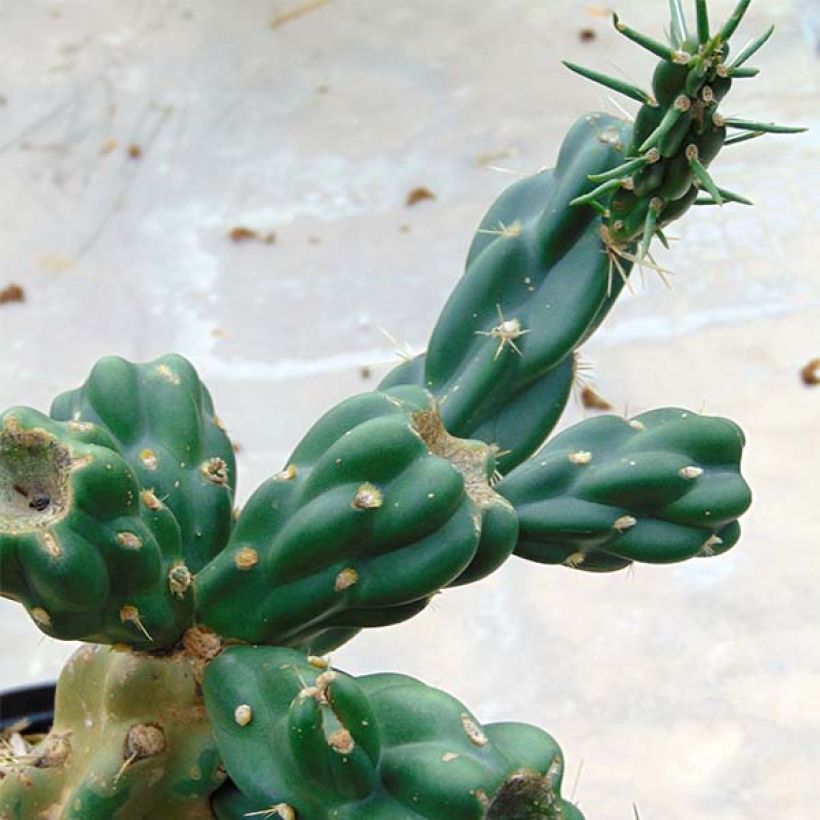

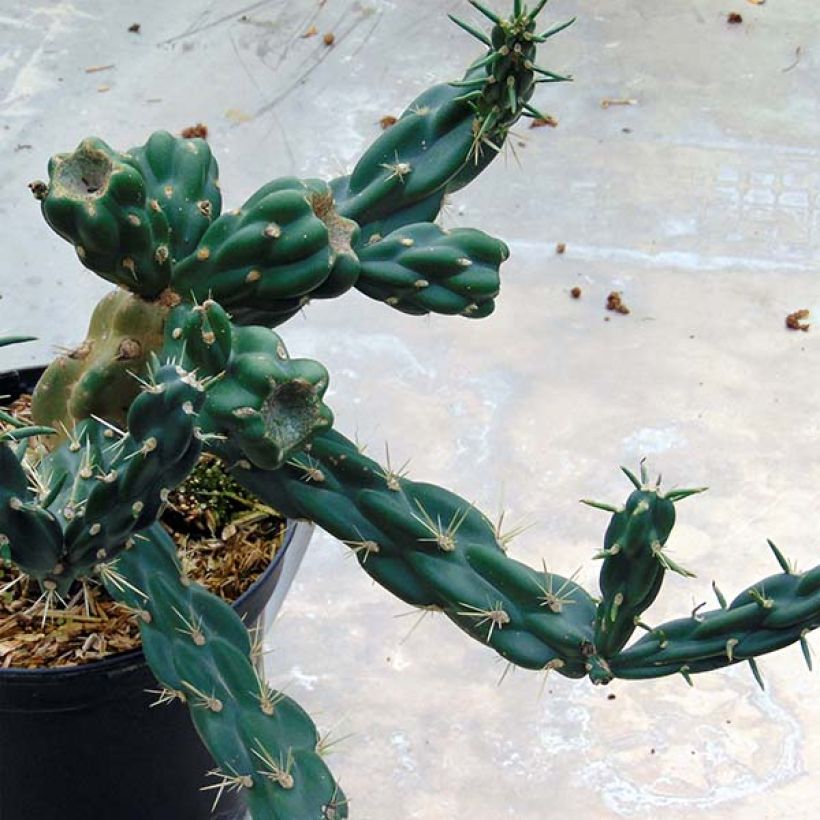

Flowering
Foliage
Plant habit
Botanical data
Cylindropuntia
imbricata
Cactaceae
Tree cholla, Cane cholla, Chainlink cactus, Devil's rope
North America
Other Shrubs A to Z
Planting and care
Handle this plant with protective gloves.
Plant Cylindropuntia imbricata in spring or early autumn, in full sun or partial shade, in preferably poor soil. It can grow in rocky, limestone, and sandy soil, but only if it is well-drained. It tolerates moisture and winter cold in porous soil and appreciates dry, even arid soils in summer. It can withstand frost up to approximately -15°C (5°F) and is not afraid of snow. Its segments collapse in winter, due to the cold, but "reinflate" in spring. This species also tolerates sea spray and can therefore be cultivated by the seaside. It is not known to have any enemies.
Cultivation substrate: 3/4 potting soil + 1/4 vegetable soil + organic fertiliser for potted plants. Sandy, very rocky soil, poor in clay for open-field cultivation.
Propagation by cuttings: take a segment at a junction, place it on a cactus-type substrate for a few days until a healing callus forms. Bury the base of the cutting a little deeper into the soil and water regularly. The plant will not flower or bear fruit before the age of 3.
Planting period
Intended location
Care
-
, onOrder confirmed
Reply from on Promesse de fleurs
Evergreen shrubs
Haven't found what you were looking for?
Hardiness is the lowest winter temperature a plant can endure without suffering serious damage or even dying. However, hardiness is affected by location (a sheltered area, such as a patio), protection (winter cover) and soil type (hardiness is improved by well-drained soil).

Photo Sharing Terms & Conditions
In order to encourage gardeners to interact and share their experiences, Promesse de fleurs offers various media enabling content to be uploaded onto its Site - in particular via the ‘Photo sharing’ module.
The User agrees to refrain from:
- Posting any content that is illegal, prejudicial, insulting, racist, inciteful to hatred, revisionist, contrary to public decency, that infringes on privacy or on the privacy rights of third parties, in particular the publicity rights of persons and goods, intellectual property rights, or the right to privacy.
- Submitting content on behalf of a third party;
- Impersonate the identity of a third party and/or publish any personal information about a third party;
In general, the User undertakes to refrain from any unethical behaviour.
All Content (in particular text, comments, files, images, photos, videos, creative works, etc.), which may be subject to property or intellectual property rights, image or other private rights, shall remain the property of the User, subject to the limited rights granted by the terms of the licence granted by Promesse de fleurs as stated below. Users are at liberty to publish or not to publish such Content on the Site, notably via the ‘Photo Sharing’ facility, and accept that this Content shall be made public and freely accessible, notably on the Internet.
Users further acknowledge, undertake to have ,and guarantee that they hold all necessary rights and permissions to publish such material on the Site, in particular with regard to the legislation in force pertaining to any privacy, property, intellectual property, image, or contractual rights, or rights of any other nature. By publishing such Content on the Site, Users acknowledge accepting full liability as publishers of the Content within the meaning of the law, and grant Promesse de fleurs, free of charge, an inclusive, worldwide licence for the said Content for the entire duration of its publication, including all reproduction, representation, up/downloading, displaying, performing, transmission, and storage rights.
Users also grant permission for their name to be linked to the Content and accept that this link may not always be made available.
By engaging in posting material, Users consent to their Content becoming automatically accessible on the Internet, in particular on other sites and/or blogs and/or web pages of the Promesse de fleurs site, including in particular social pages and the Promesse de fleurs catalogue.
Users may secure the removal of entrusted content free of charge by issuing a simple request via our contact form.
The flowering period indicated on our website applies to countries and regions located in USDA zone 8 (France, the United Kingdom, Ireland, the Netherlands, etc.)
It will vary according to where you live:
- In zones 9 to 10 (Italy, Spain, Greece, etc.), flowering will occur about 2 to 4 weeks earlier.
- In zones 6 to 7 (Germany, Poland, Slovenia, and lower mountainous regions), flowering will be delayed by 2 to 3 weeks.
- In zone 5 (Central Europe, Scandinavia), blooming will be delayed by 3 to 5 weeks.
In temperate climates, pruning of spring-flowering shrubs (forsythia, spireas, etc.) should be done just after flowering.
Pruning of summer-flowering shrubs (Indian Lilac, Perovskia, etc.) can be done in winter or spring.
In cold regions as well as with frost-sensitive plants, avoid pruning too early when severe frosts may still occur.
The planting period indicated on our website applies to countries and regions located in USDA zone 8 (France, United Kingdom, Ireland, Netherlands).
It will vary according to where you live:
- In Mediterranean zones (Marseille, Madrid, Milan, etc.), autumn and winter are the best planting periods.
- In continental zones (Strasbourg, Munich, Vienna, etc.), delay planting by 2 to 3 weeks in spring and bring it forward by 2 to 4 weeks in autumn.
- In mountainous regions (the Alps, Pyrenees, Carpathians, etc.), it is best to plant in late spring (May-June) or late summer (August-September).
The harvesting period indicated on our website applies to countries and regions in USDA zone 8 (France, England, Ireland, the Netherlands).
In colder areas (Scandinavia, Poland, Austria...) fruit and vegetable harvests are likely to be delayed by 3-4 weeks.
In warmer areas (Italy, Spain, Greece, etc.), harvesting will probably take place earlier, depending on weather conditions.
The sowing periods indicated on our website apply to countries and regions within USDA Zone 8 (France, UK, Ireland, Netherlands).
In colder areas (Scandinavia, Poland, Austria...), delay any outdoor sowing by 3-4 weeks, or sow under glass.
In warmer climes (Italy, Spain, Greece, etc.), bring outdoor sowing forward by a few weeks.


































